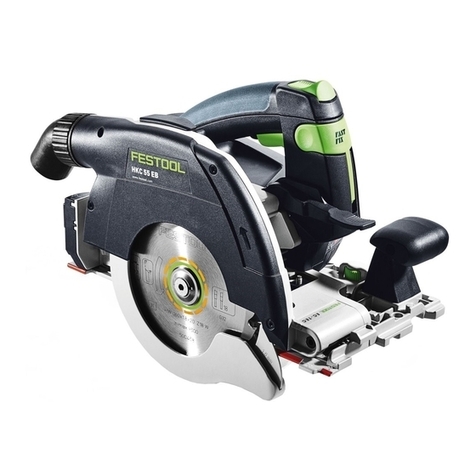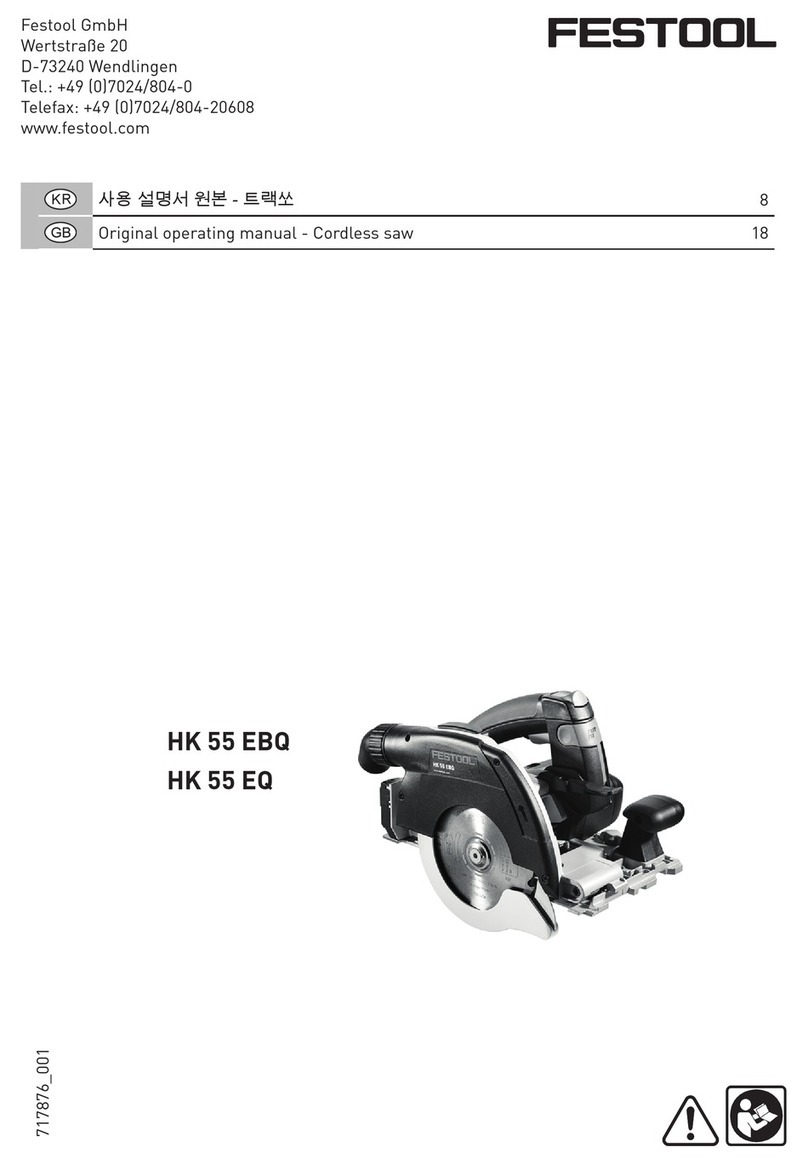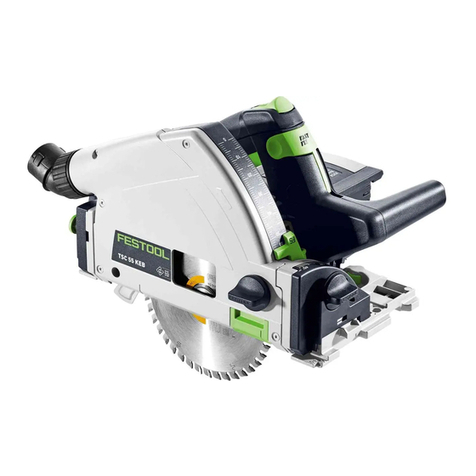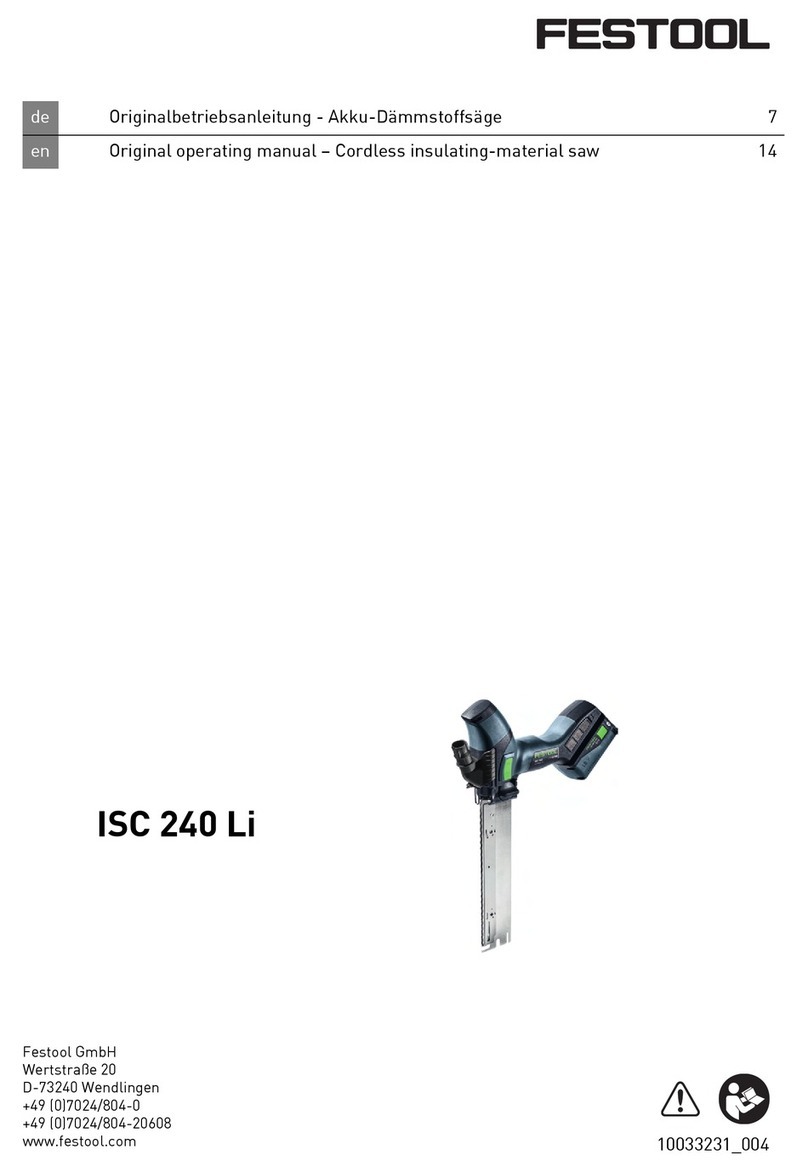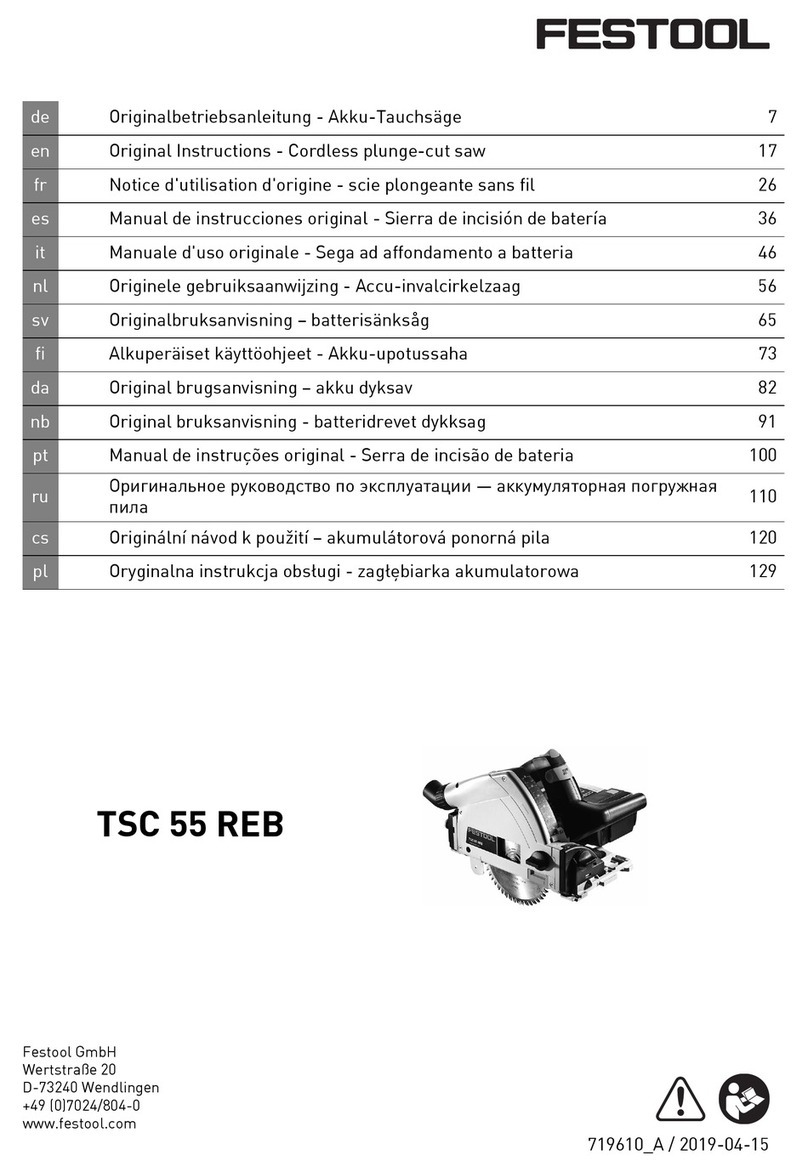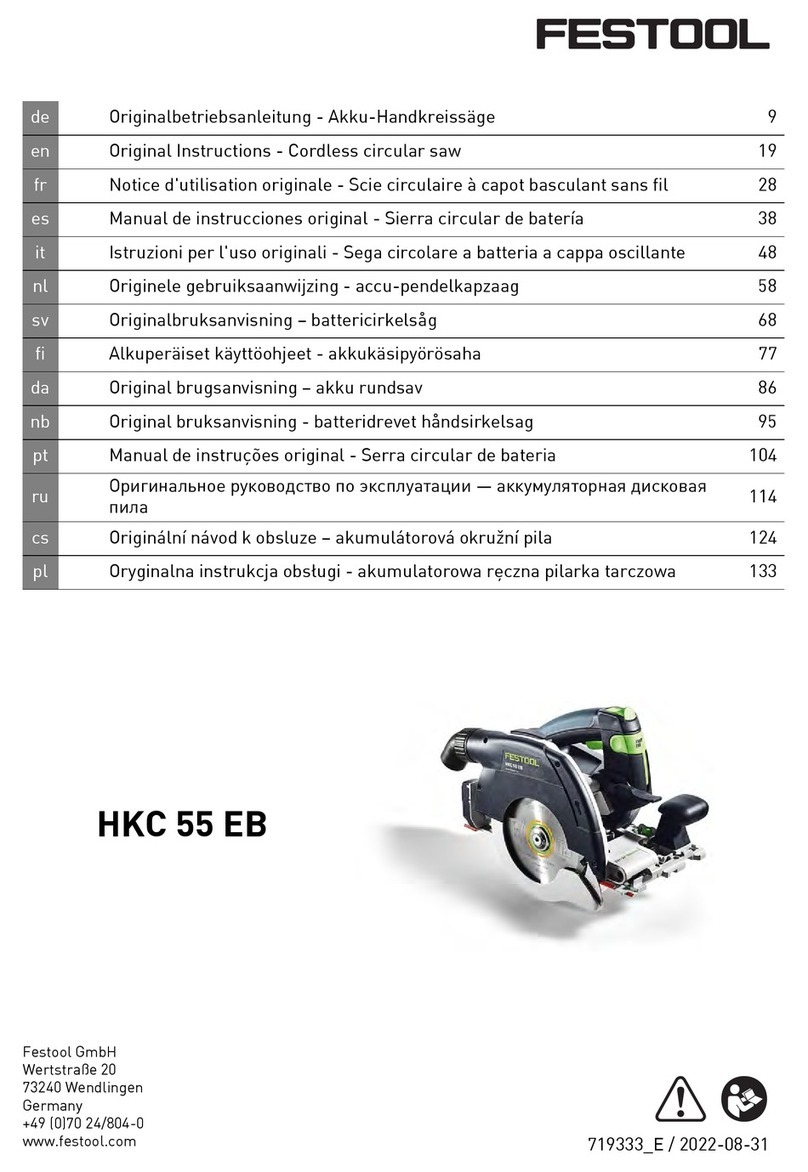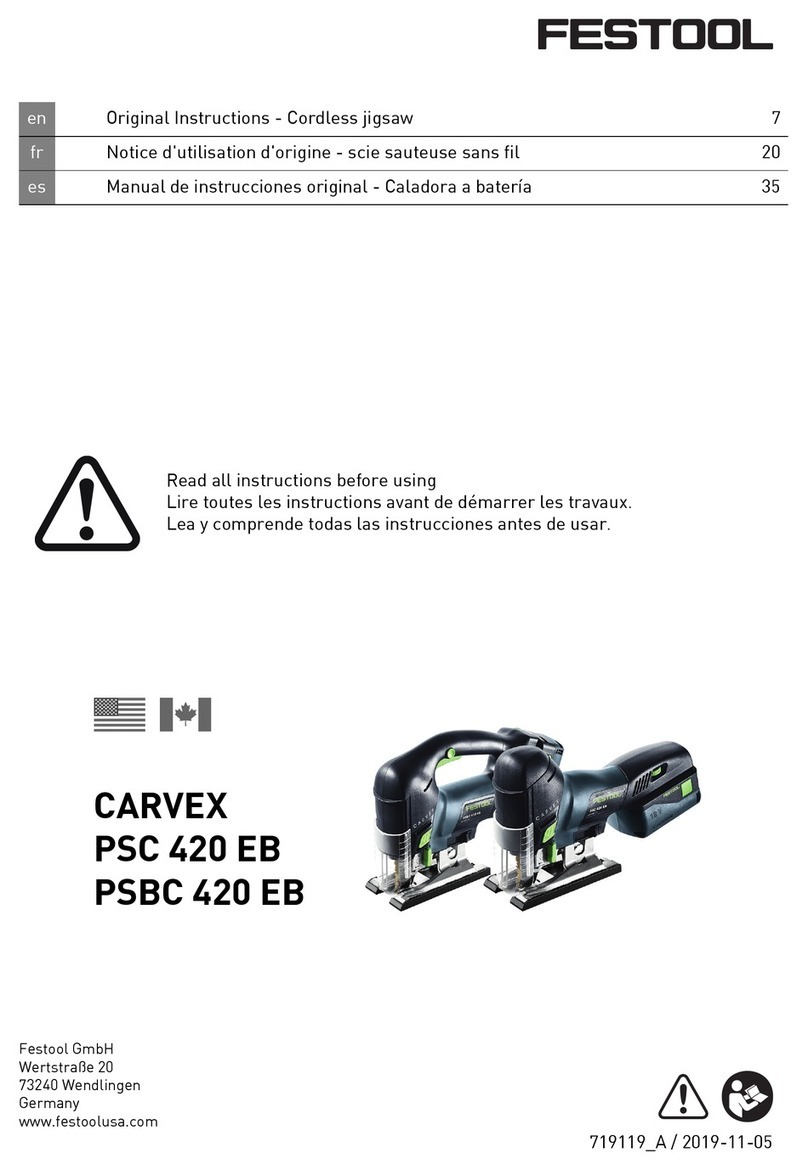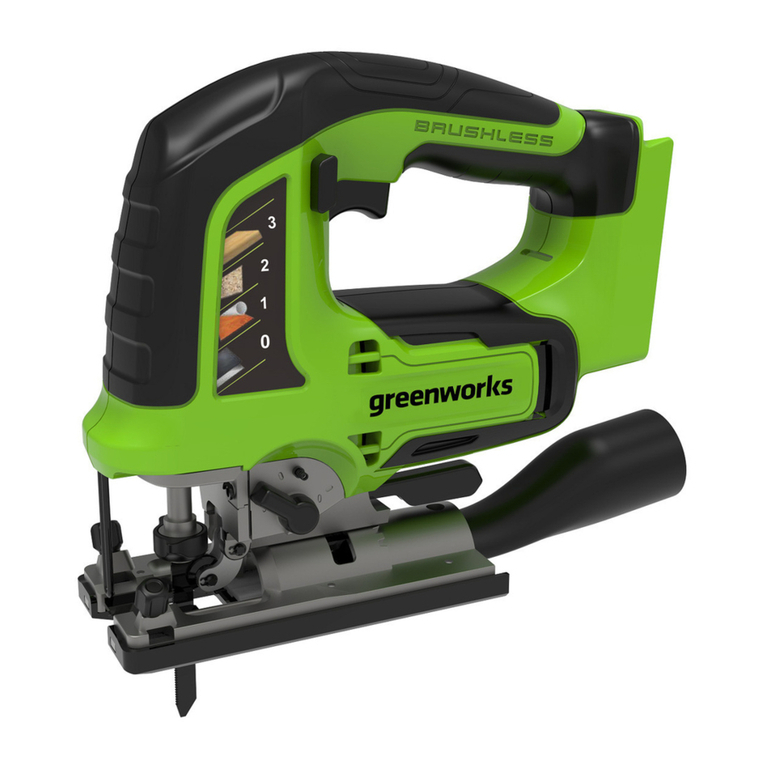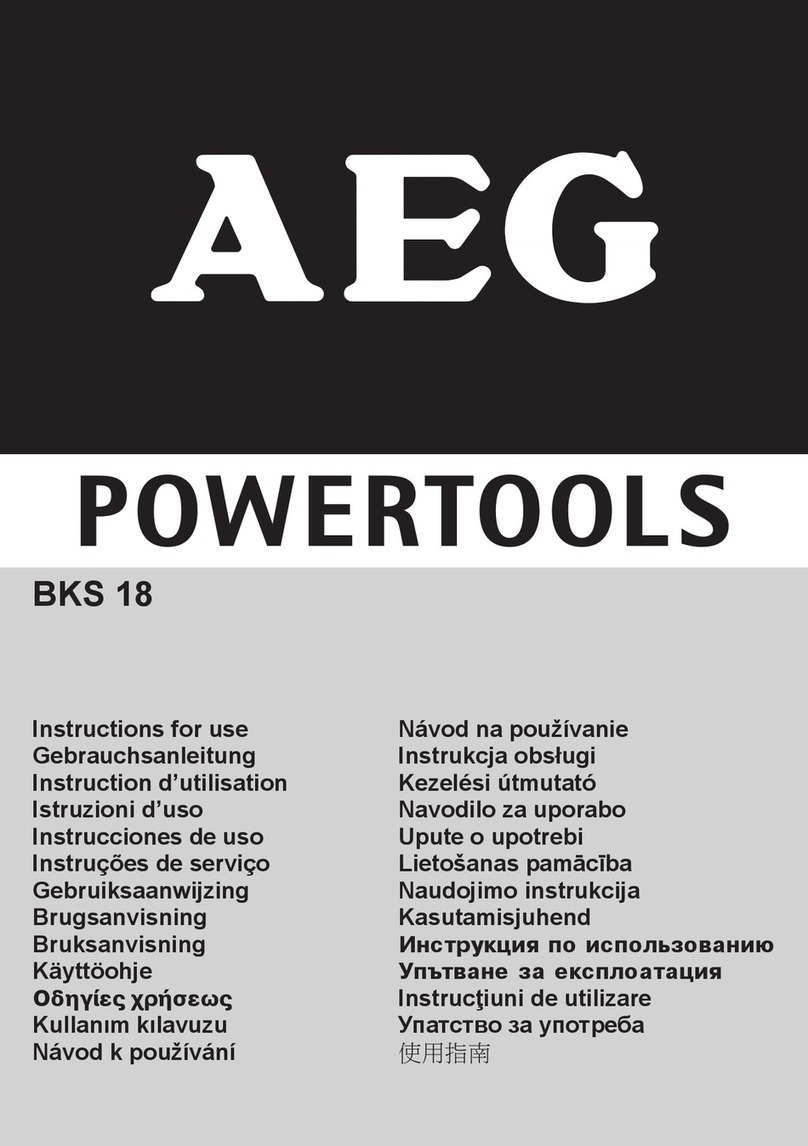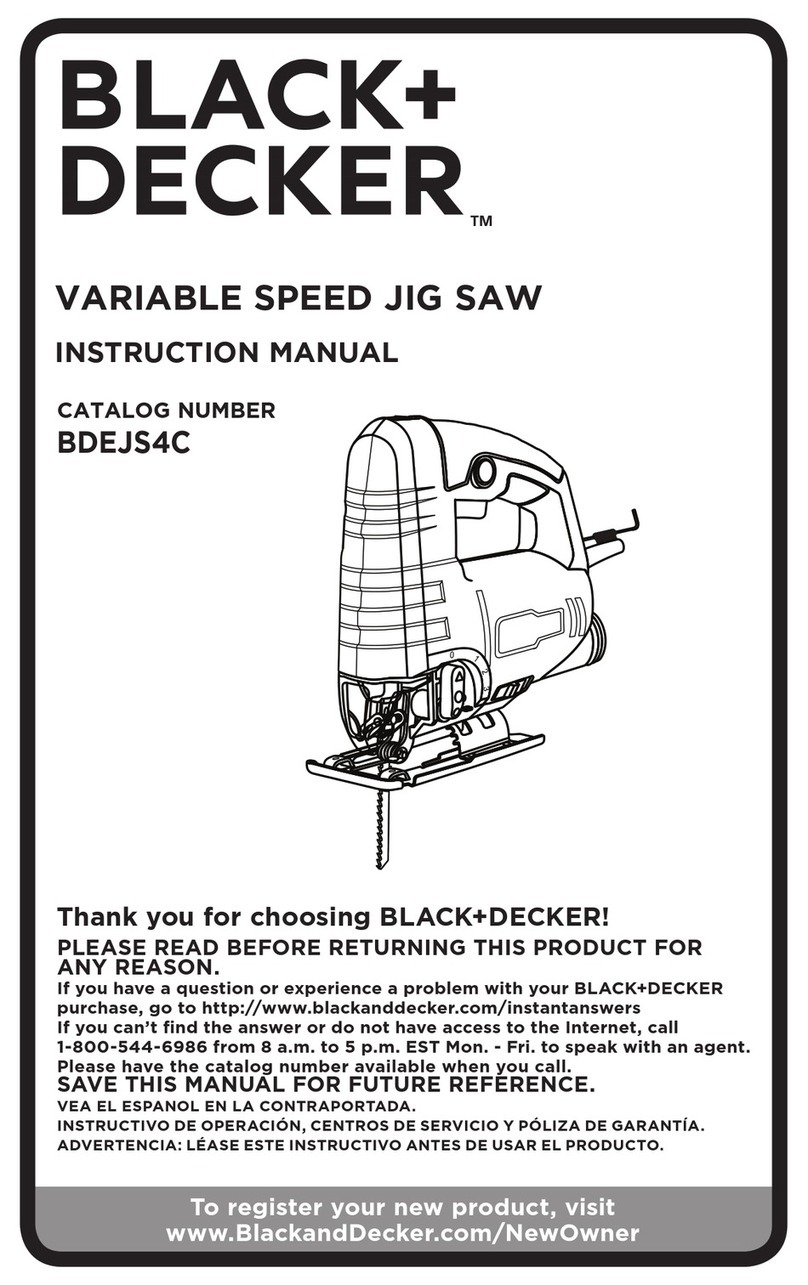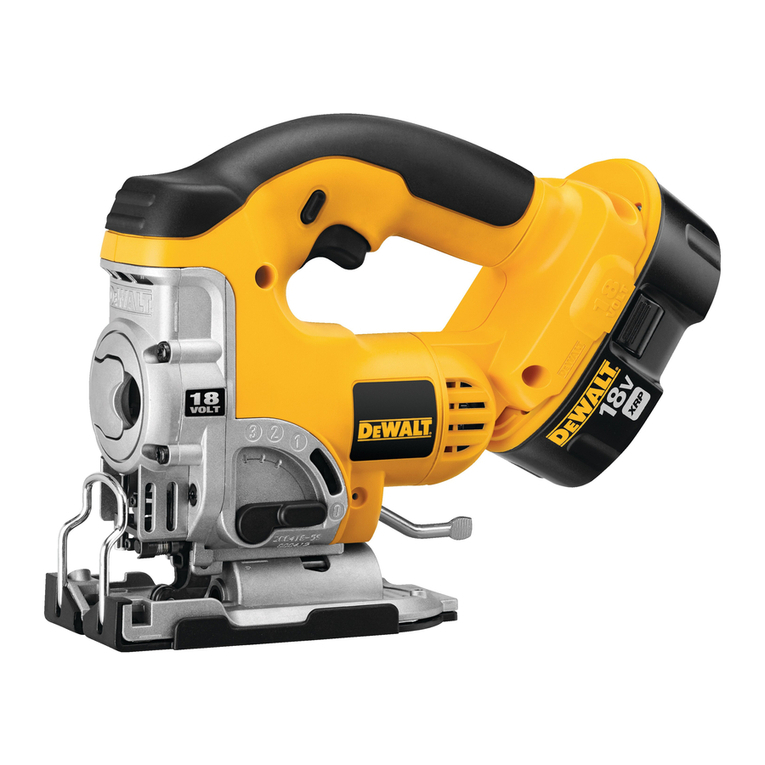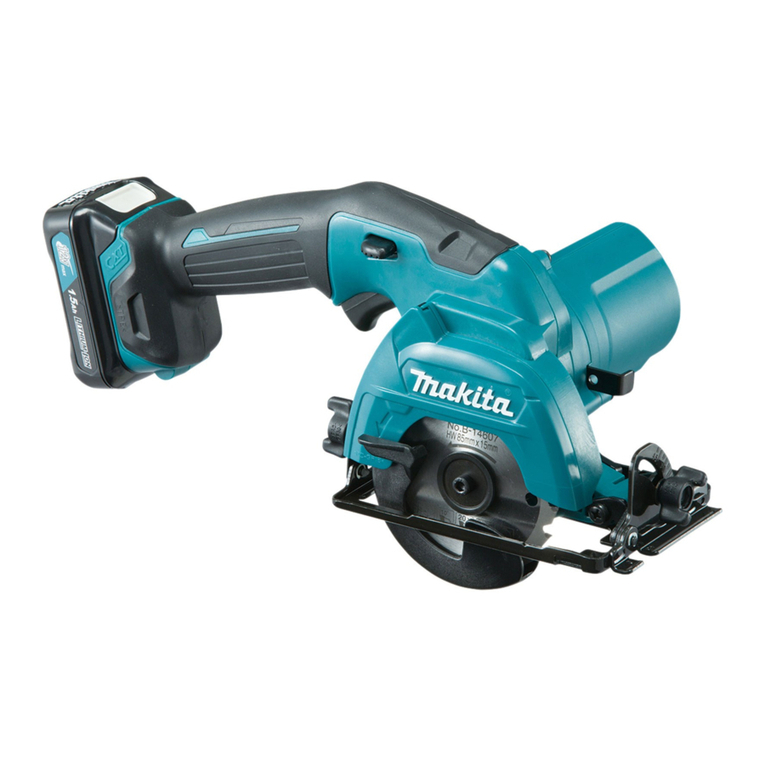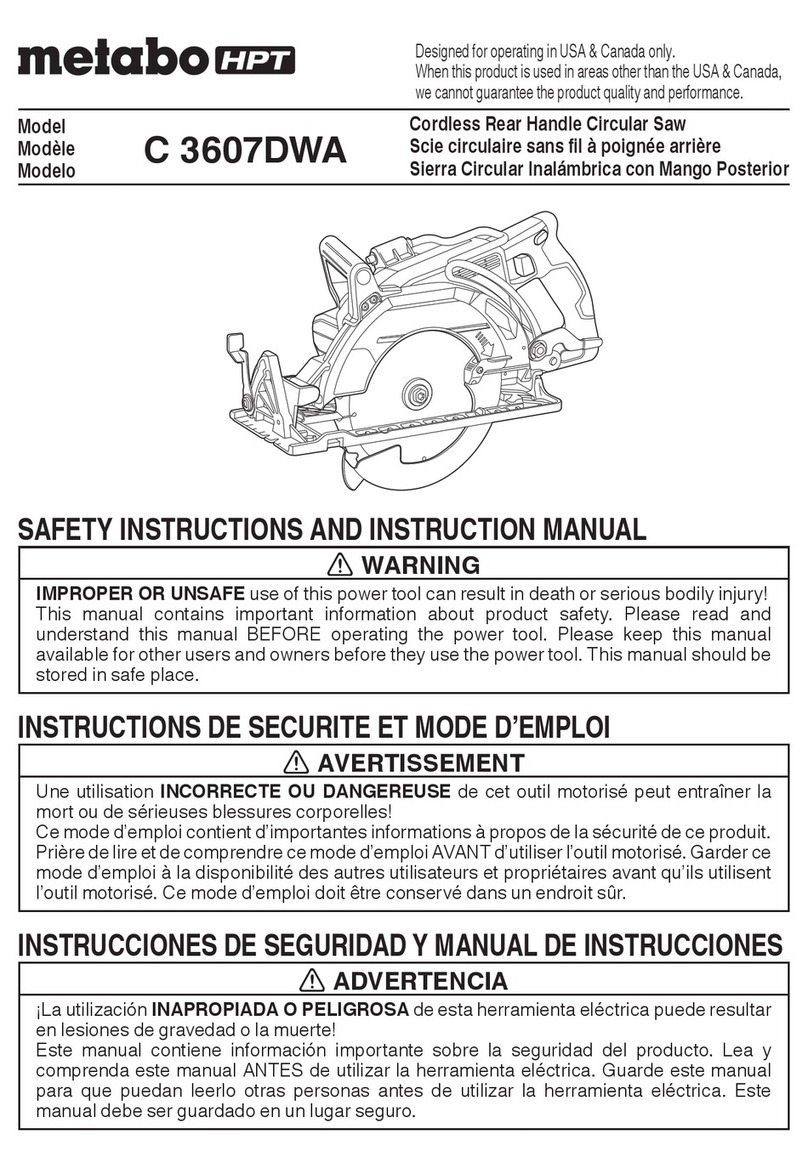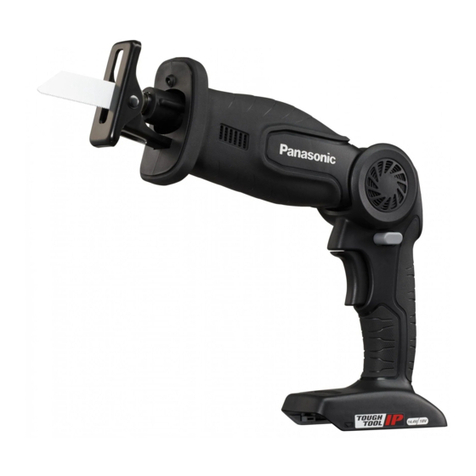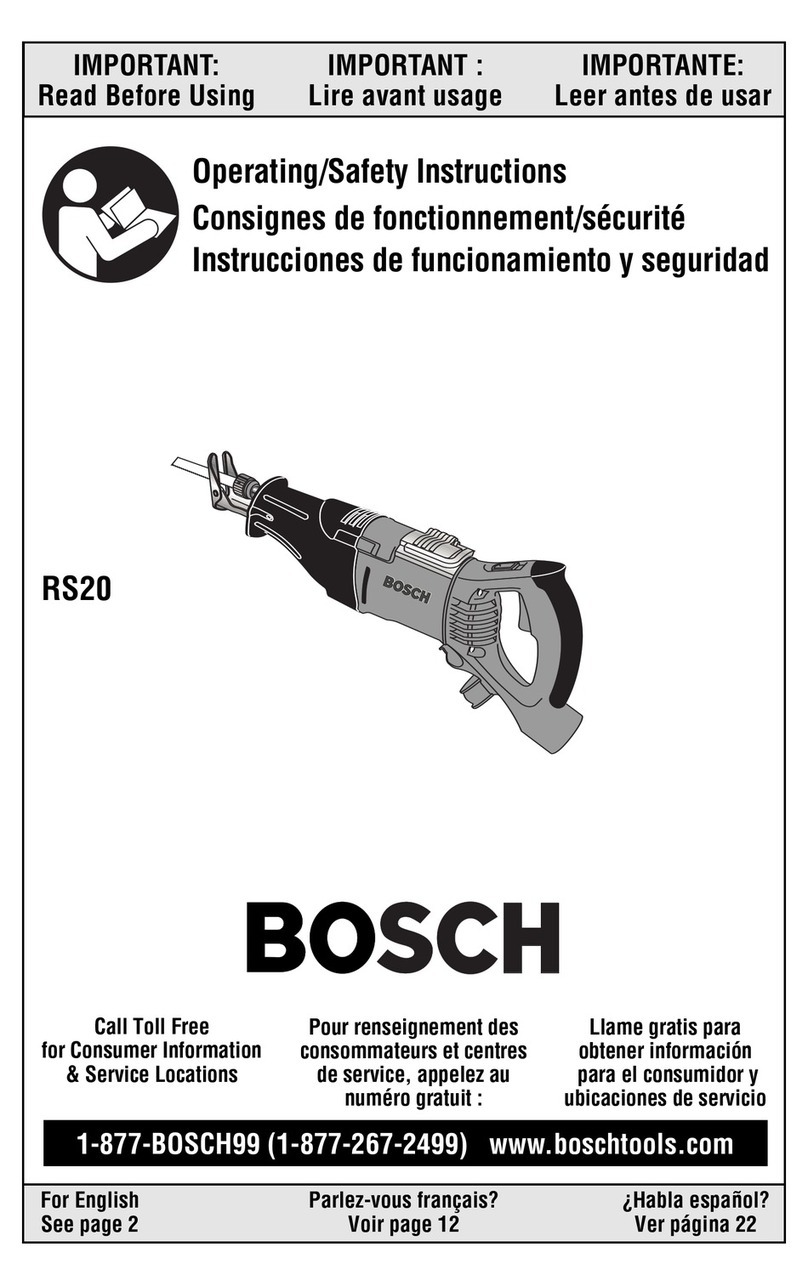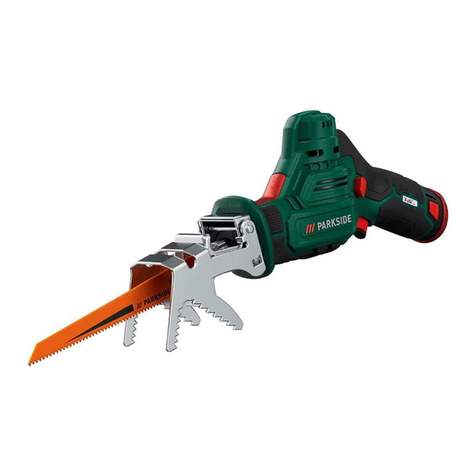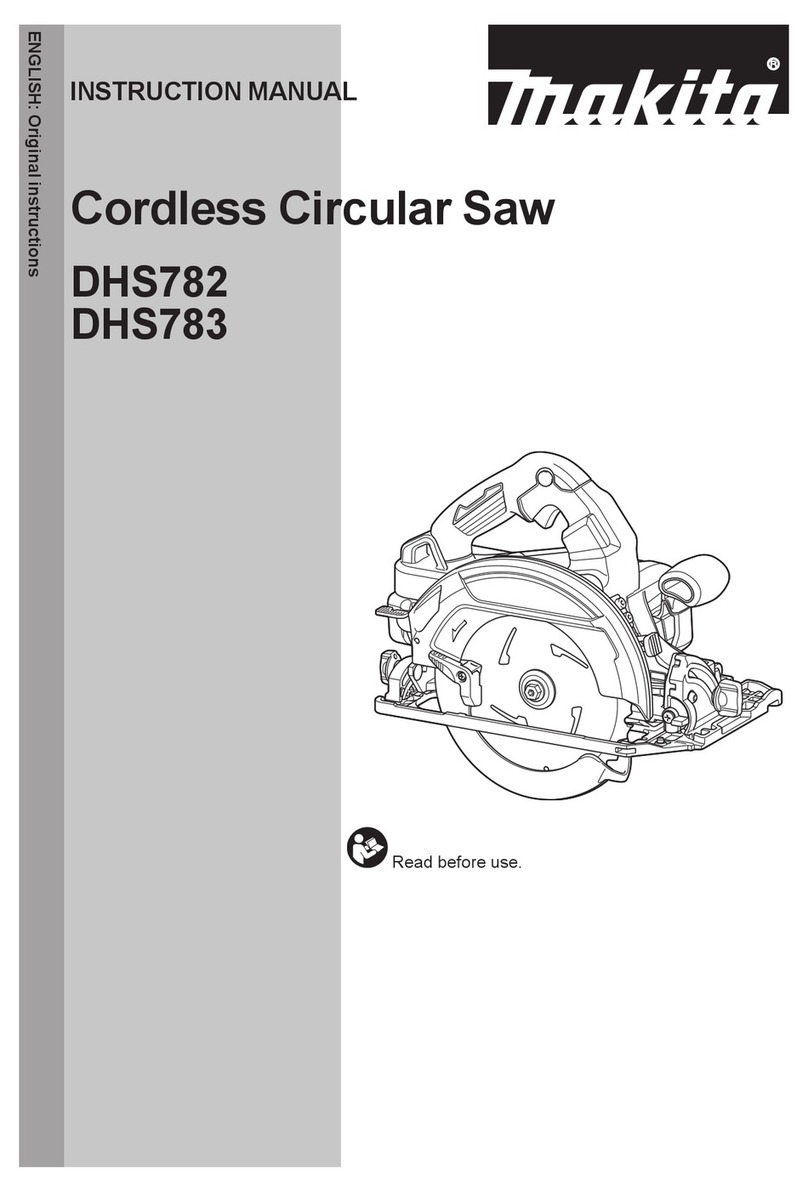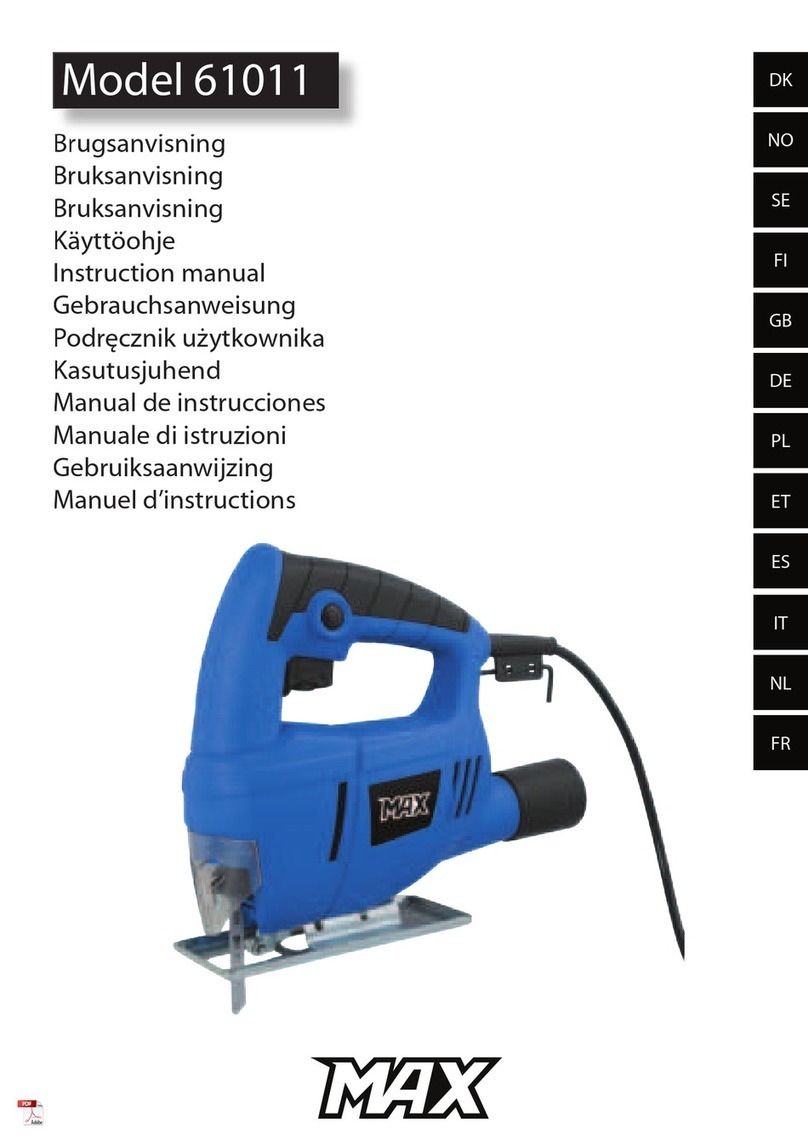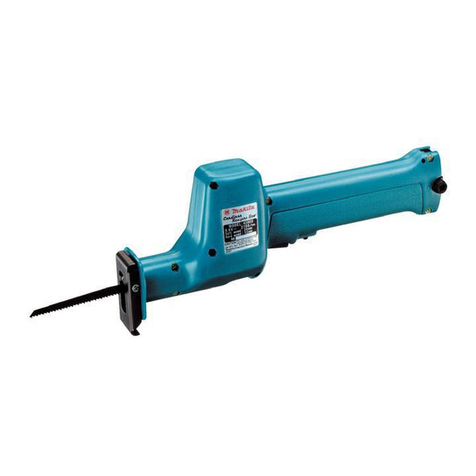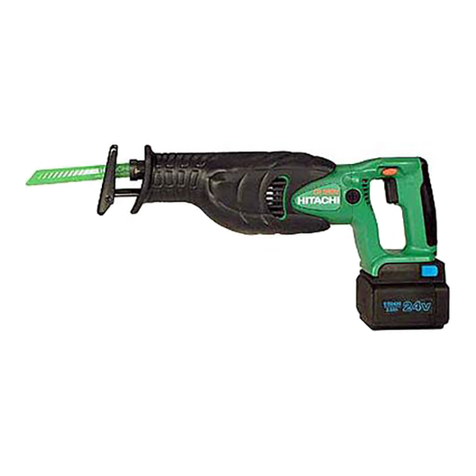
h. Do not let familiarity gained from frequent
use of tools allow you to become compla
cent and ignore tool safety principles. A
careless action can cause severe injury
within a fraction of a second.
4 POWER TOOL USE AND CARE
a. Do not force the power tool. Use the cor
rect power tool for your application. The
correct power tool will do the job better and
safer at the rate for which it was designed.
b. Do not use the power tool if the switch
does not turn it on and off. Any power tool
that cannot be controlled with the switch is
dangerous and must be repaired.
c. Disconnect the plug from the power
source and/or remove the battery pack, if
detachable, from the power tool before
making any adjustments, changing acces
sories, or storing power tools. Such pre
ventive safety measures reduce the risk of
starting the power tool accidentally.
d. Store idle power tools out of the reach of
children and do not allow persons unfami
liar with the power tool or these instruc
tions to operate the power tool. Power
tools are dangerous in the hands of un
trained users.
e. Maintain power tools and accessories.
Check for misalignment or binding of mov
ing parts, breakage of parts and any other
condition that may affect the power tool’s
operation. If damaged, have the power
tool repaired before use. Many accidents
are caused by poorly maintained power
tools.
f. Keep cutting tools sharp and clean. Prop
erly maintained cutting tools with sharp
cutting edges are less likely to bind and are
easier to control.
g. Use the power tool, accessories and tool
bits etc. in accordance with these instruc
tions, taking into account the working con
ditions and the work to be performed. Use
of the power tool for operations different
from those intended could result in a haz
ardous situation.
h. Keep handles and grasping surfaces dry,
clean and free from oil and grease. Slip
pery handles and grasping surfaces do not
allow for safe handling and control of the
tool in unexpected situations.
5 BATTERY TOOL USE AND CARE
a. Recharge only with the charger specified
by the manufacturer. A charger that is
suitable for one type of battery pack may
create a risk of fire when used with another
battery pack.
b. Use power tools only with specifically des
ignated battery packs. Use of any other
battery packs may create a risk of injury
and fire.
c. When battery pack is not in use, keep it
away from other metal objects, like paper
clips, coins, keys, nails, screws or other
small metal objects, that can make a con
nection from one terminal to another.
Shorting the battery terminals together
may cause burns or a fire.
d. Under abusive conditions, liquid may be
ejected from the battery; avoid contact. If
contact accidentally occurs, flush with wa
ter. If liquid contacts eyes, additionally
seek medical help. Liquid ejected from the
battery may cause irritation or burns.
e. Do not use a battery pack or tool that is
damaged or modified. Damaged or modi
fied batteries may exhibit unpredictable be
haviour resulting in fire, explosion or risk of
injury.
f. Do not expose a battery pack or tool to fire
or excessive temperature. Exposure to fire
or temperature above 130 °C (265 °F) may
cause explosion.
g. Follow all charging instructions and do not
charge the battery pack or tool outside the
temperature range specified in the in
structions. Charging improperly or at tem
peratures outside the specified range may
damage the battery and increase the risk of
fire.
6 SERVICE
a. Have your power tool serviced by a quali
fied repair person using only identical re
placement parts. This will ensure that the
safety of the power tool is maintained.
b. Never service damaged battery packs.
Service of battery packs should only be
performed by the manufacturer or author
ized service providers.
c. Only use original Festool parts for repair
and maintenance. The use of incompatible
accessories or spare parts can result in
electric shocks or other injuries.
English
9
